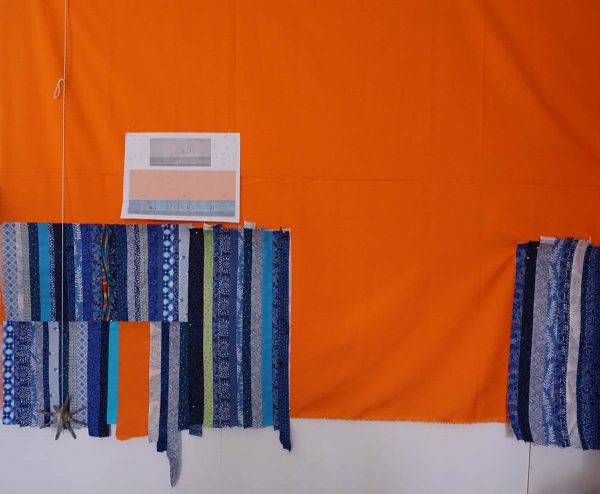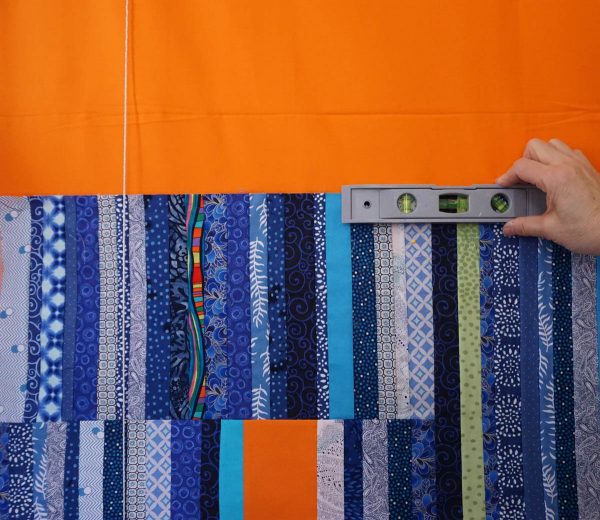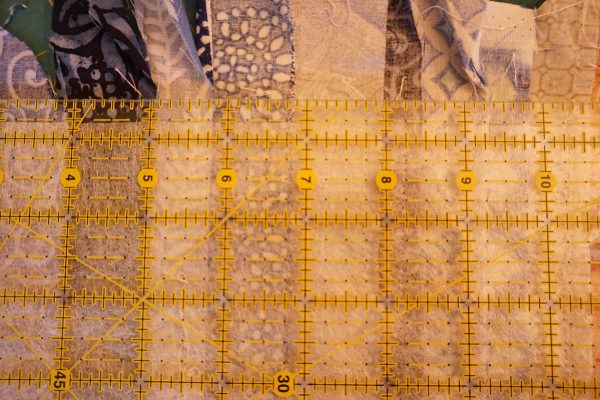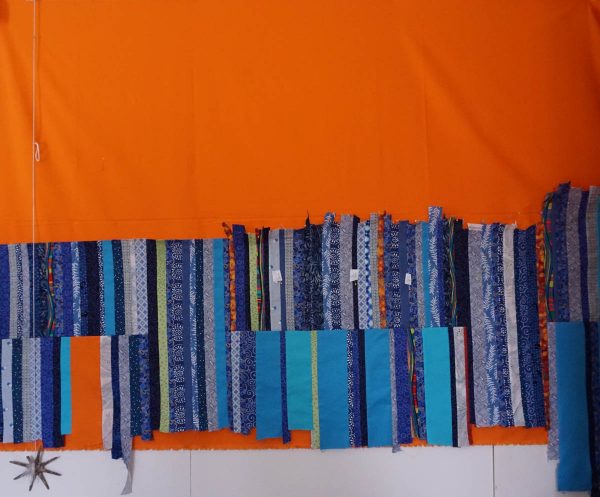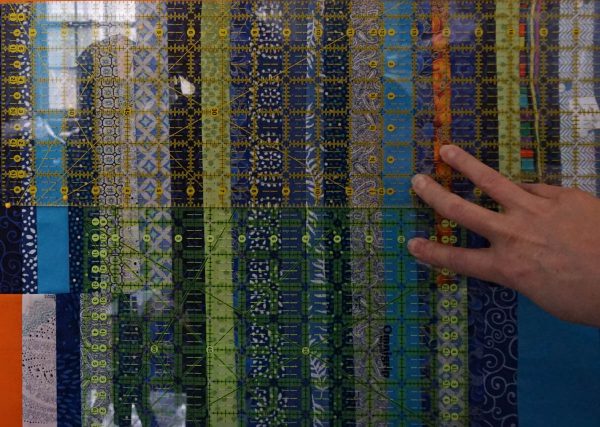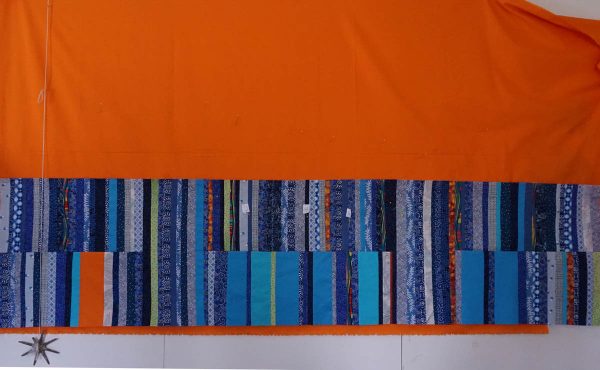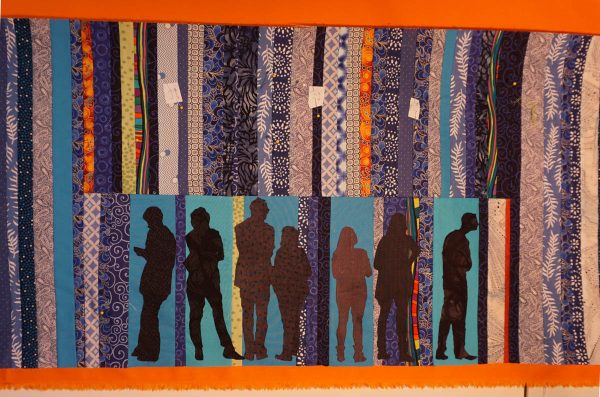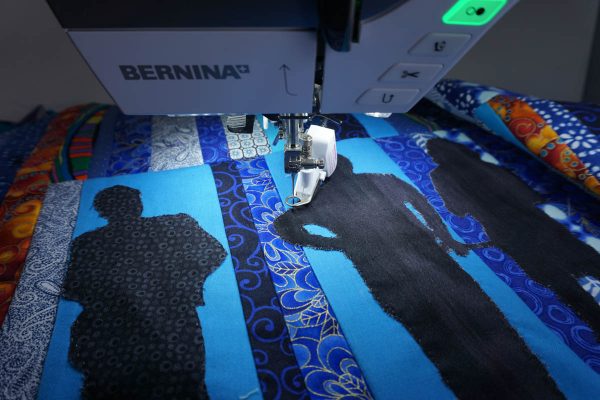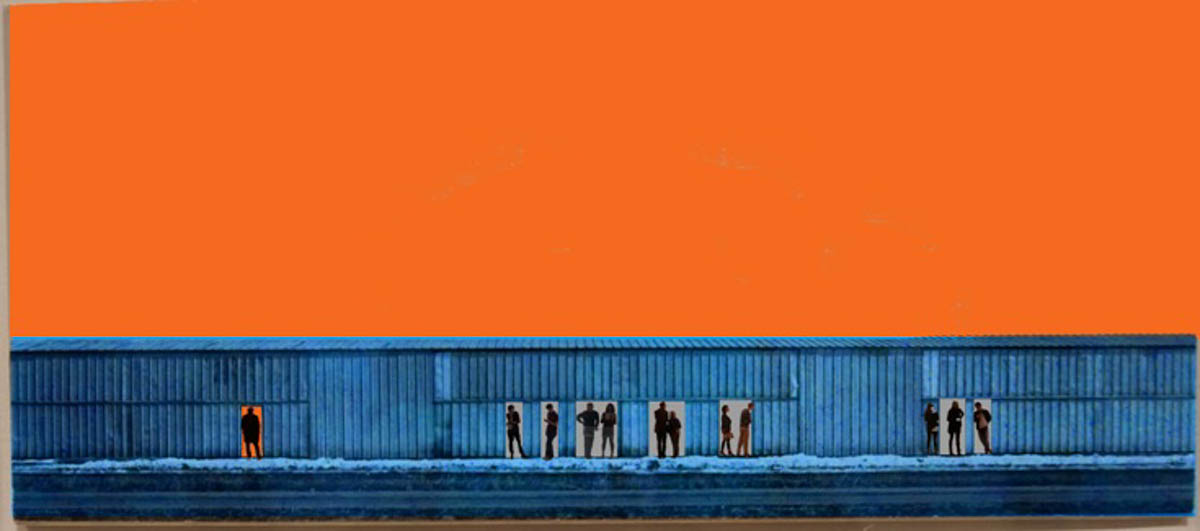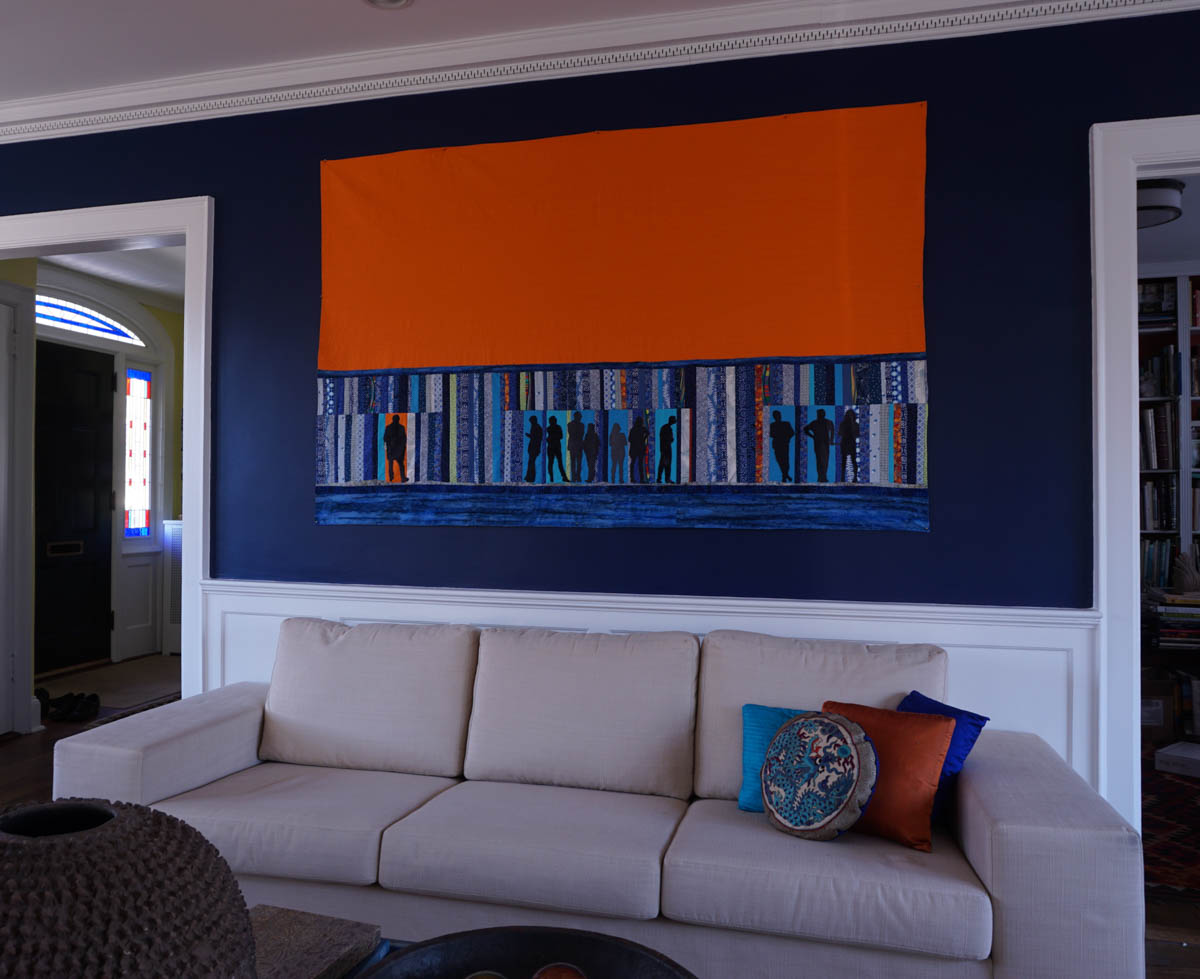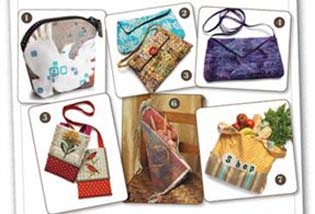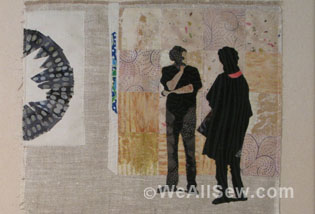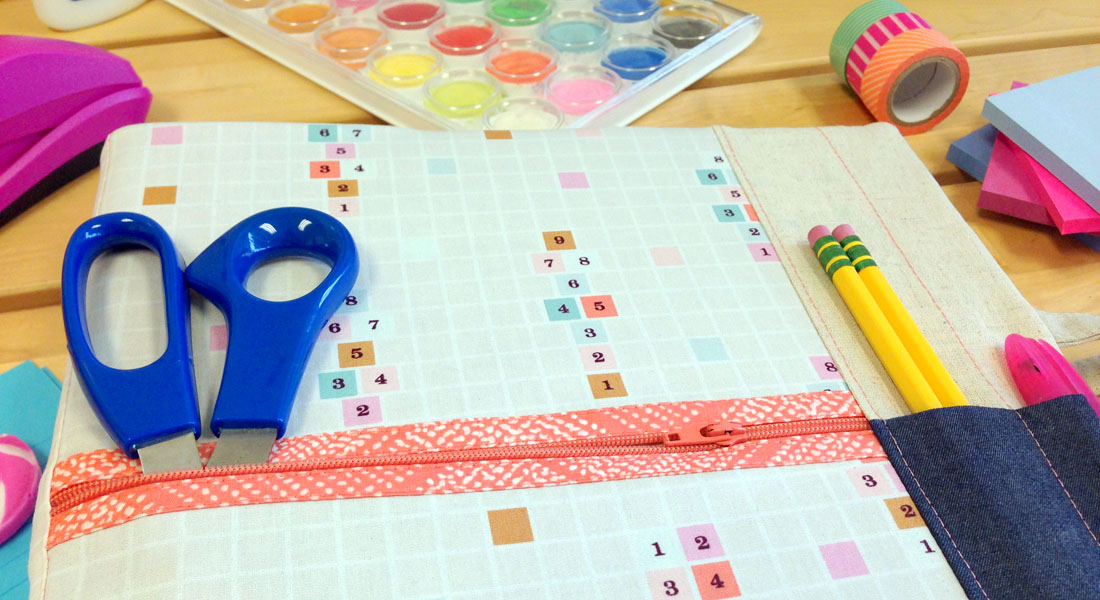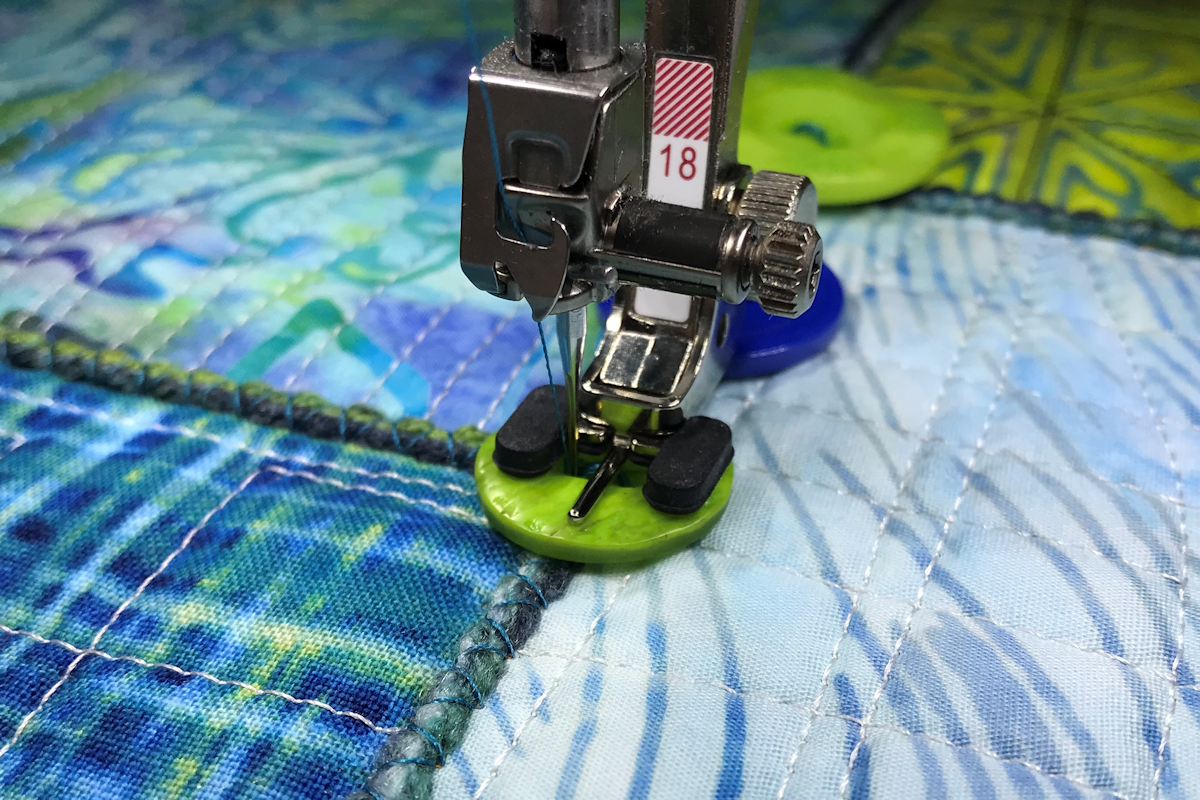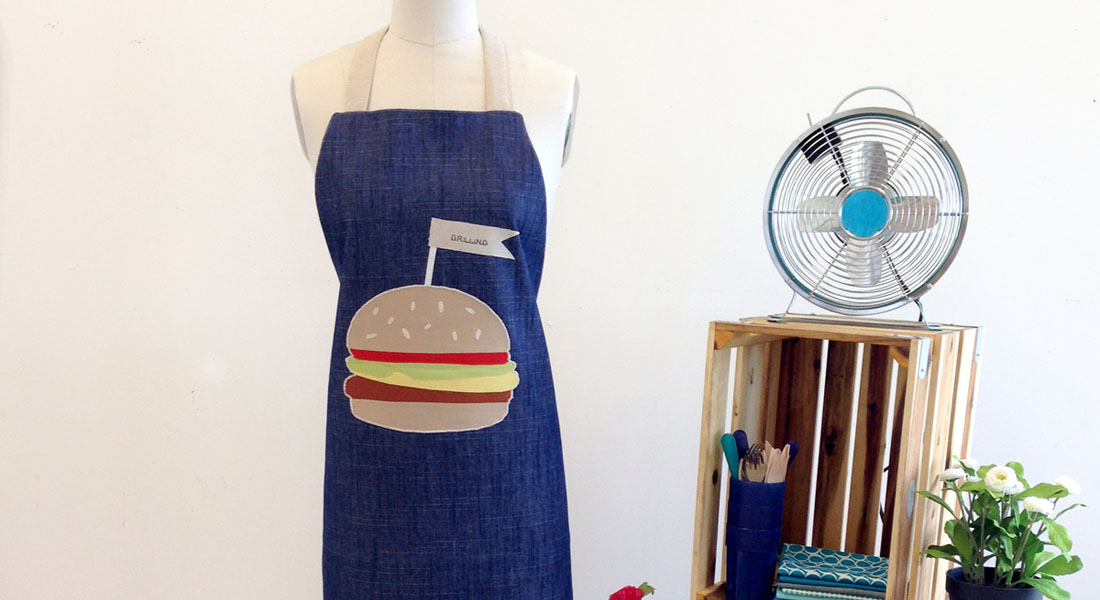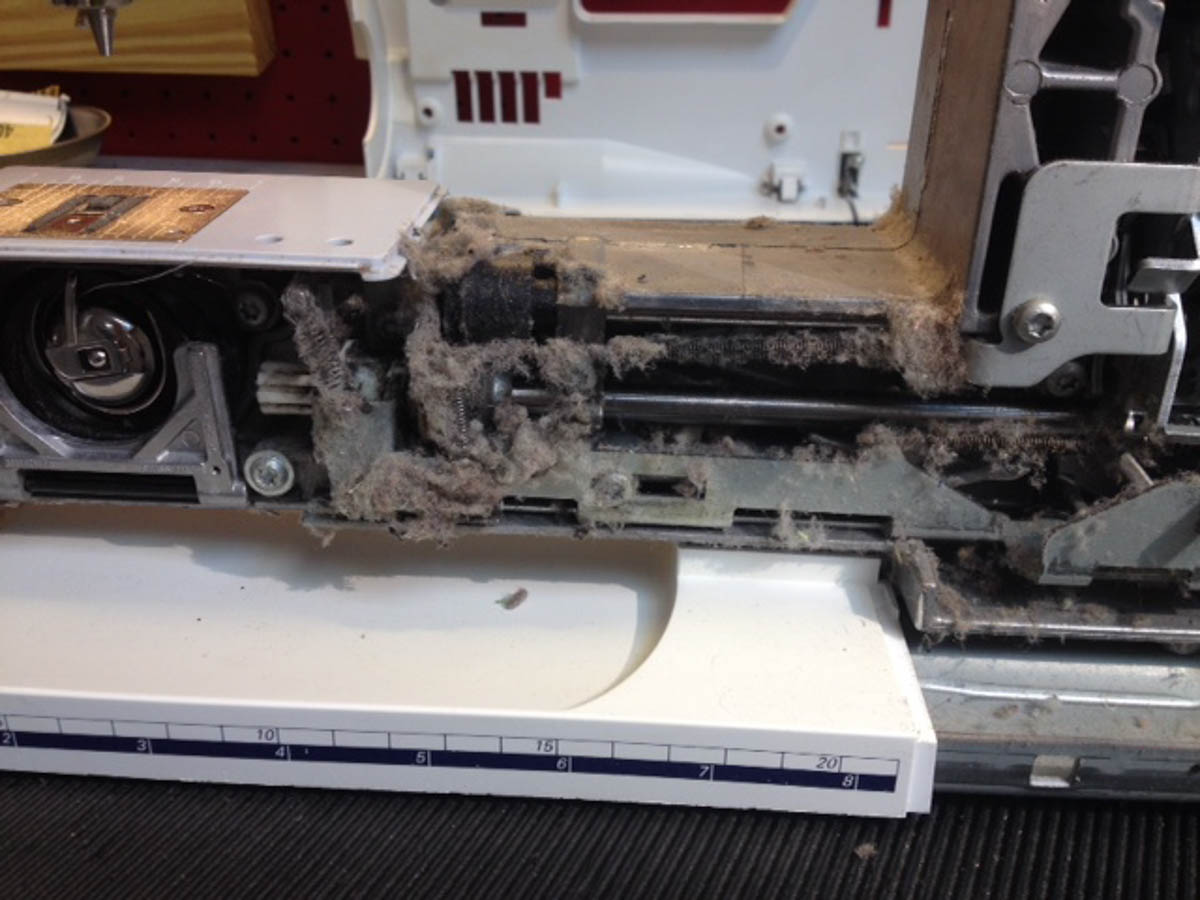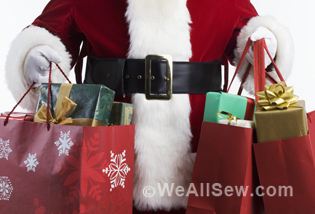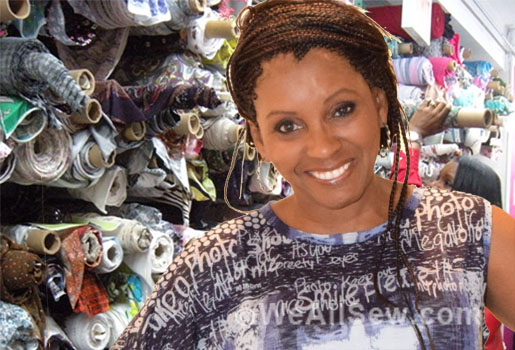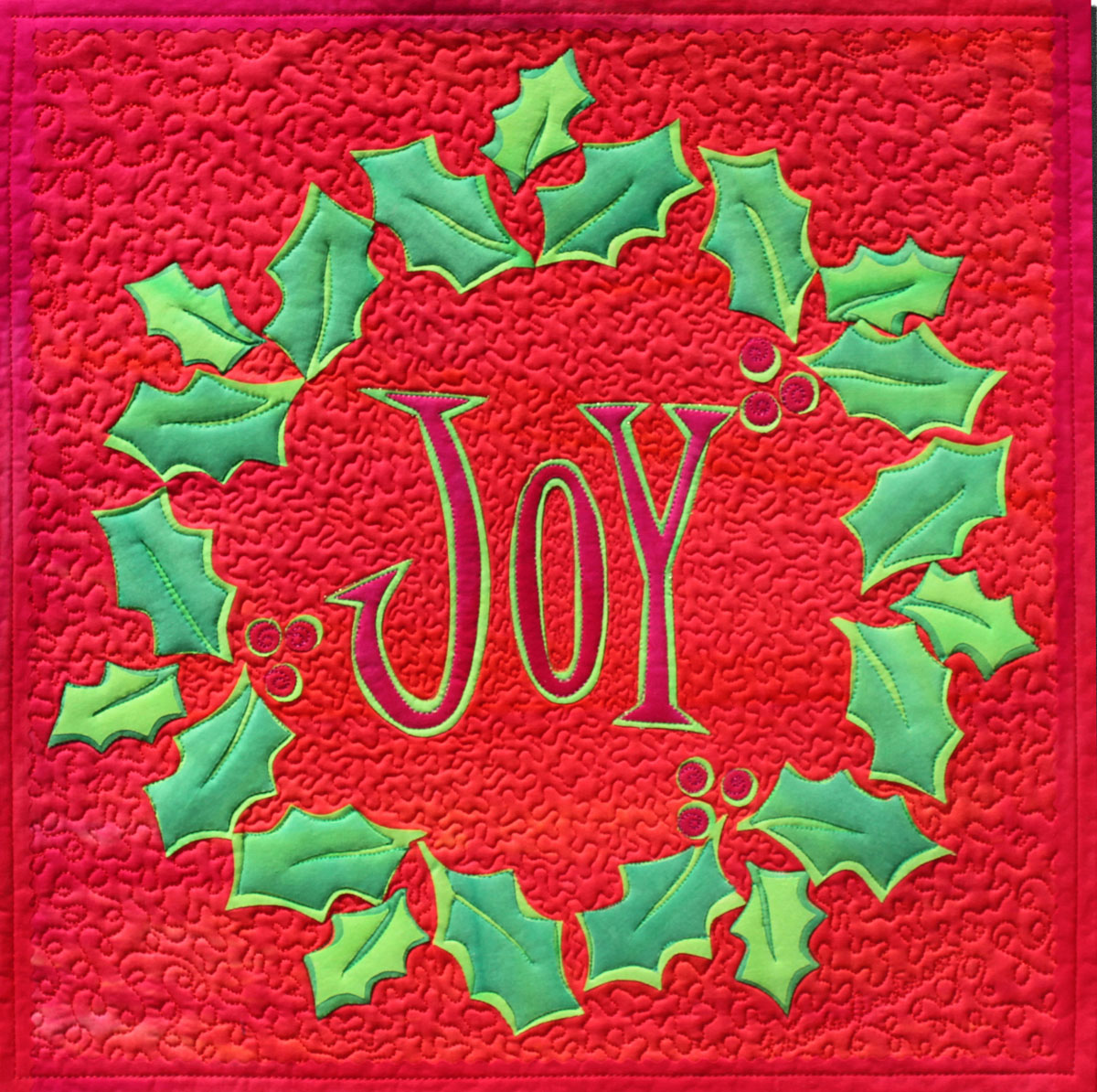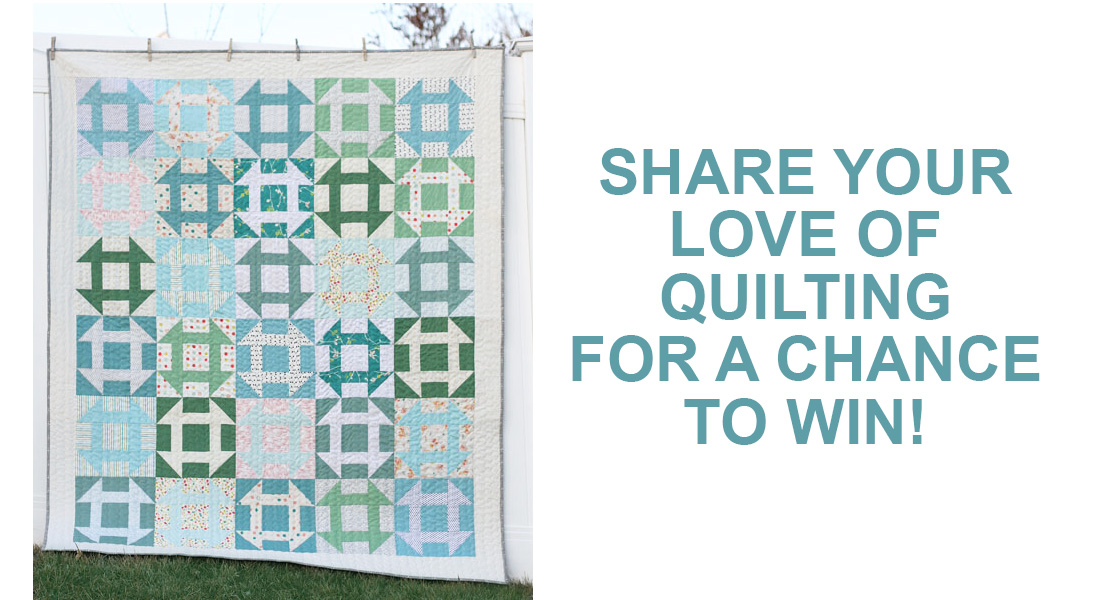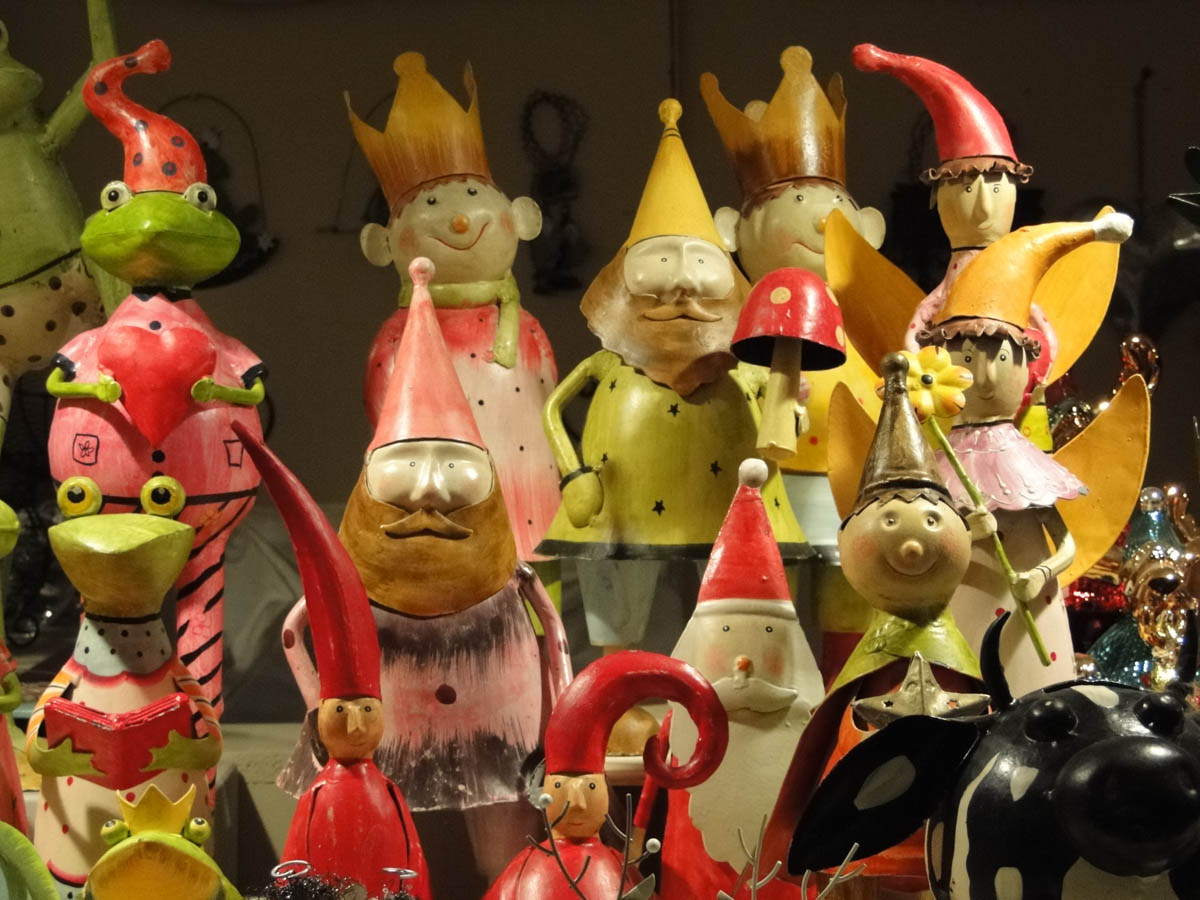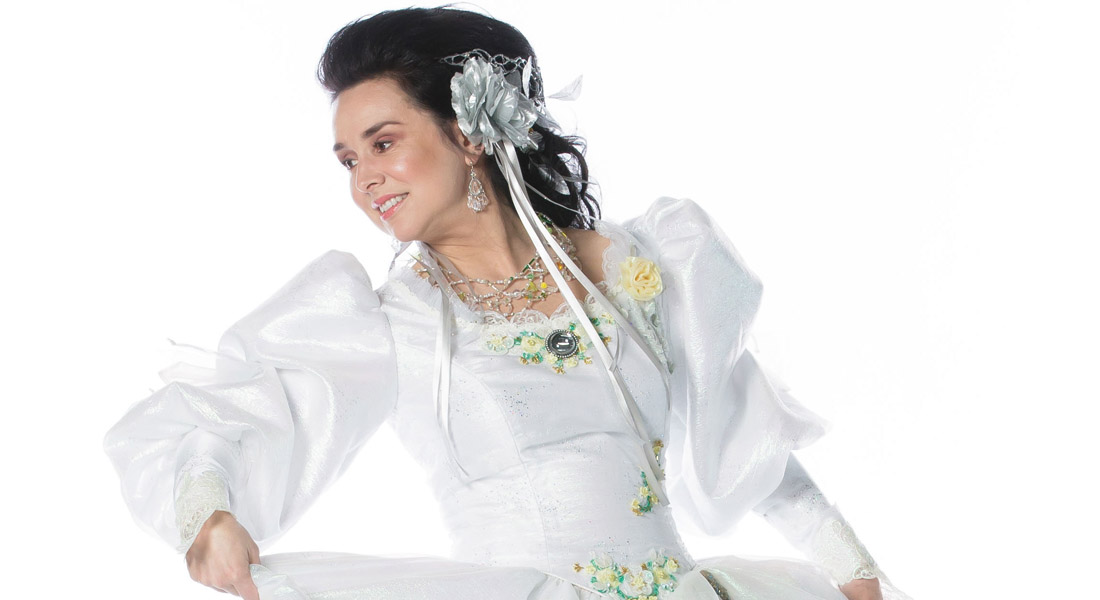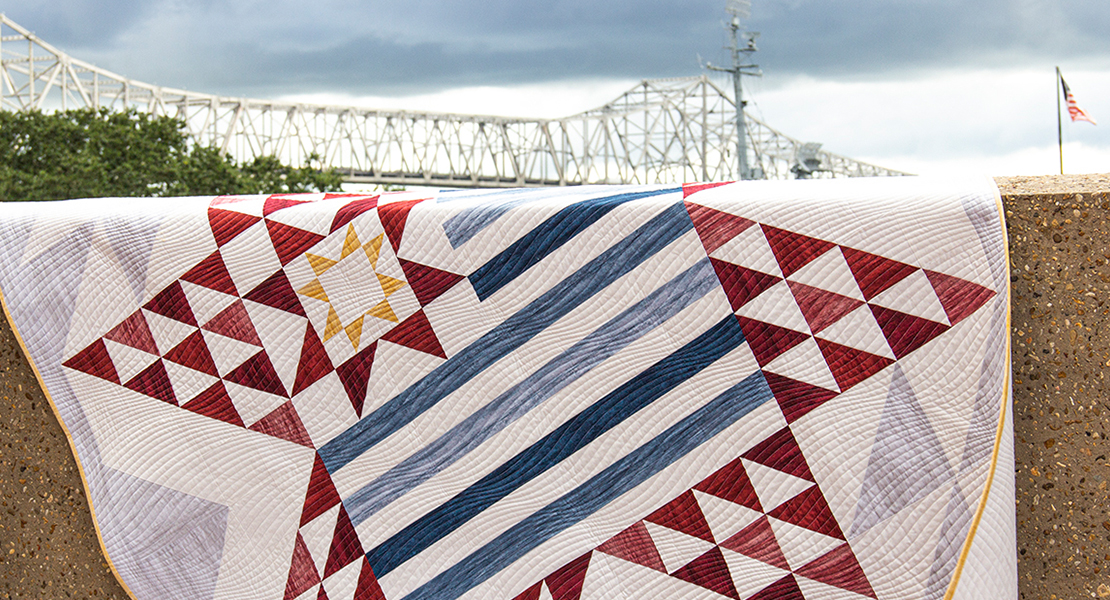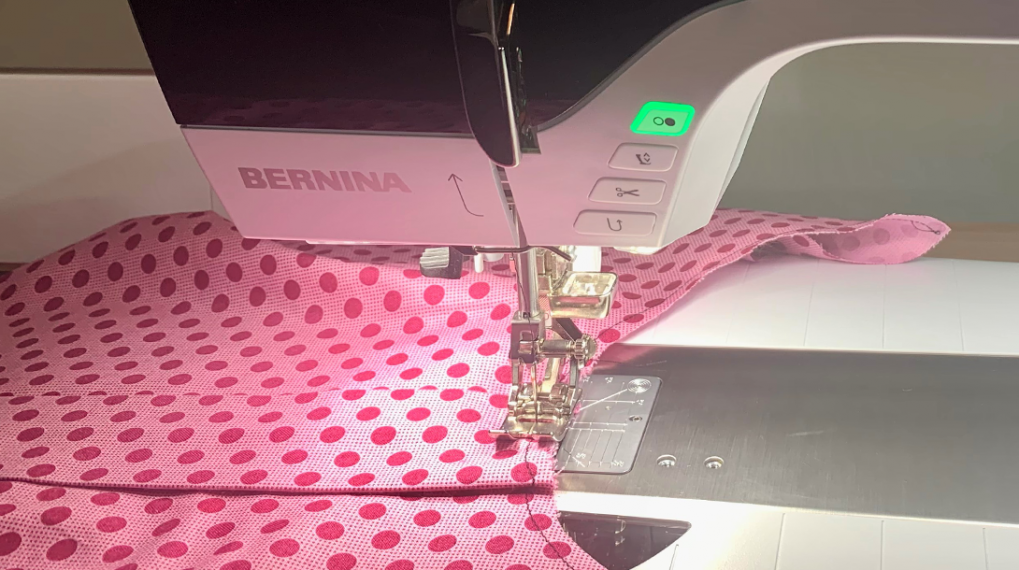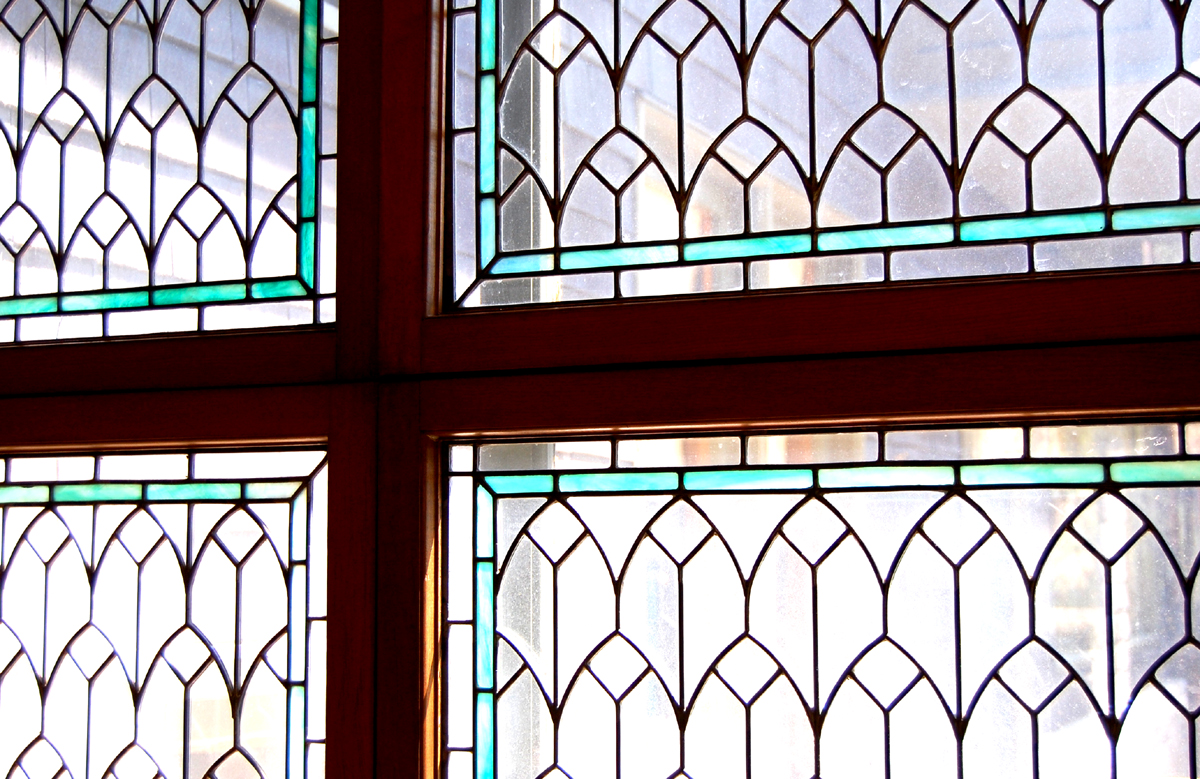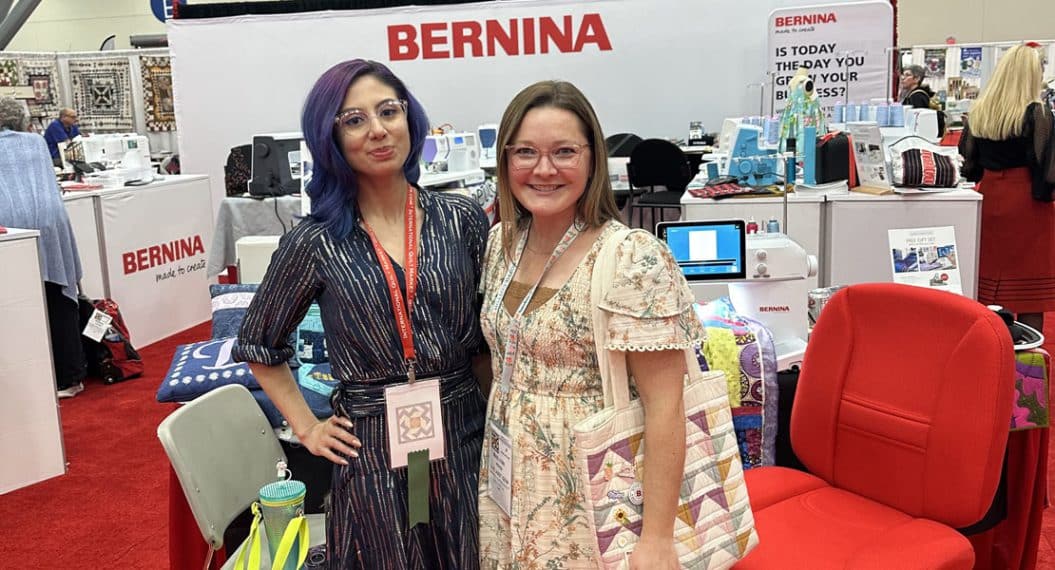Anatomy of an Art Quilt from Inspiration to completion – Construction
This is the second in a series Anatomy of an Art Quilt from Inspiration to completion of three posts that will take you with me from inspiration to finished art quilt. In the first post, I discussed the original inspiration and how I used that as the starting point for my artistic expression. I started by sewing sections together by foundation piecing. In this post, I will talk about the actual construction and the decisions I made along the way.
CONSTRUCTION
If you remember, I had cut a pile of random width strips to use for the bottom section of my composition and sewed them together in measured sections using a foundation to keep everything straight, and am now ready to put everything together.
These foundation pieced sections were pinned to the design wall so I could watch the piece develop.
A plumb line (in my case an old metal spoke hanging from a string) insures that while I work everything is hanging straight vertically. A level helps insure the horizontal lines are straight.
Now for the sections that needed to be sewn together horizontally—remember the strips extended a little above and below the foundation? Now you will see why. Here I employed a little trick when squaring off the edges:
(TIP)—instead of cutting the strips at the edge of (or inside) the foundation, I made my square off cut ¼” above the edge of the interfacing. Why? Because now the interfacing will not be in the seam allowance, making it less bulky and therefore more easily pressed and crisper when finished.
Once the half sections were completed, each was trimmed to size (adding ½” for seam allowances [1/4” on each side]) and sewn together until the blue strip sections represented one long “element” of the finished piece. A straight pin with the point up and a scrap of paper with a number kept me from getting confused about their order and orientation while I worked.
Another helpful trick:
(TIP)—when trimming sections that measure more than the 6 ½” width of the ruler, use two rulers butted up against each other to get the measurement you want.
It does involve a little math, but nothing too stressful!
Now that the blue “element” was sewn together as a single piece, it was time to add the figures. I had taken a lot of photos of people at the museum that day and using the computer, I manipulated them so they were the size I needed and printed them to use as templates.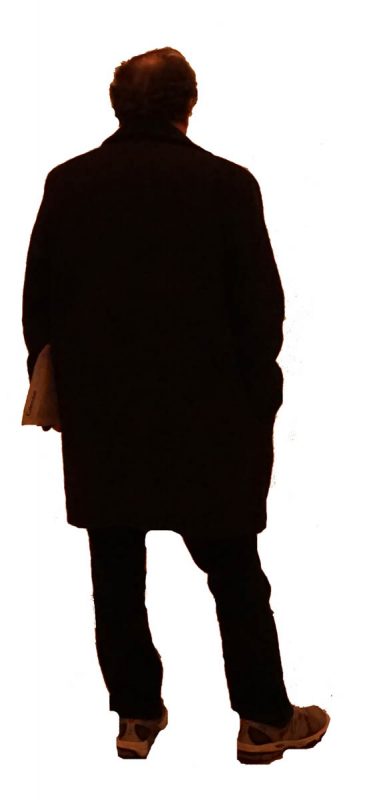 I first removed all surrounding background in Photoshop—not essential but it helped to make the edges of each figure clearer and easy to see (and saves printing ink if I am only printing the figure—for this reason I also use the printer on the “draft” mode). Each figure was to appear in silhouette, so there wasn’t much to manage but their outline. The print of each figure was placed on a light box and traced onto freezer paper. This freezer paper tracing was then put onto the right side of the chosen fabric, pressed lightly, the figure cut out around the outside edges and the paper torn away. As they were cut out, the figures were pinned onto the right spot to evaluate.
I first removed all surrounding background in Photoshop—not essential but it helped to make the edges of each figure clearer and easy to see (and saves printing ink if I am only printing the figure—for this reason I also use the printer on the “draft” mode). Each figure was to appear in silhouette, so there wasn’t much to manage but their outline. The print of each figure was placed on a light box and traced onto freezer paper. This freezer paper tracing was then put onto the right side of the chosen fabric, pressed lightly, the figure cut out around the outside edges and the paper torn away. As they were cut out, the figures were pinned onto the right spot to evaluate.
Once I was sure I liked the placement of all the figures, tiny dabs of fabric glue held them in place until I took them to the sewing machine to secure. Either a BERNINA Stitch Regulator (BSR) or a Darning foot will do the job, clear monofilament thread (in this case smoke as they were very dark fabrics) in the top and black in the bobbin; I used free motion stitching (feed dogs down, zig zag stitch) to encase the edges.
Now the primary “element” was ready and the whole art quilt could be constructed.
MORE DECISIONS TO MAKE:
In order to know how to proceed, I had two more decisions to make. First was about whether to use batting. As I wanted the final result to be flat and more “graphic” in nature I decided not to use batting in it. That means I will need to use a canvas backing fabric for more stability. Usually, I use canvas stretcher bars for the outside edges for a nice “art like” finish, but at this size that would be cumbersome, so I opted to have it hang flat directly on the wall.
Which brought me to the second important decision, how I will hang it. Here is where I took some artistic license—since this will be on my own living room wall I decided to hang it using very thin picture hanger nails right through the piece. I know, some of you are shocked (and I would not do this if the piece were to be entered into an exhibition). But there is a precedent for this kind of thing with a new trend in the art world (the art quilt world is slow to catch up) where pieces are hung in some very upscale galleries and museums with thumb tacks, pins, nails; from paper clips and shower curtain clips and other unconventional configurations. Had I intended to enter this in a show, I would have used a rod pocket (with a space in the center due to the size) on the back. But remember, although exhibitions have rules, there are no rules that govern artistic expression especially when it is for yourself—and that includes the presentation. So no rod pocket for me, just neatly finished edges all around will do.
Decisions made, I am ready to complete and hang my new artwork. Next post, the finishing and hanging.
